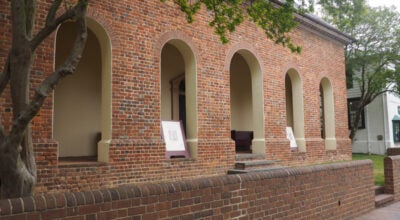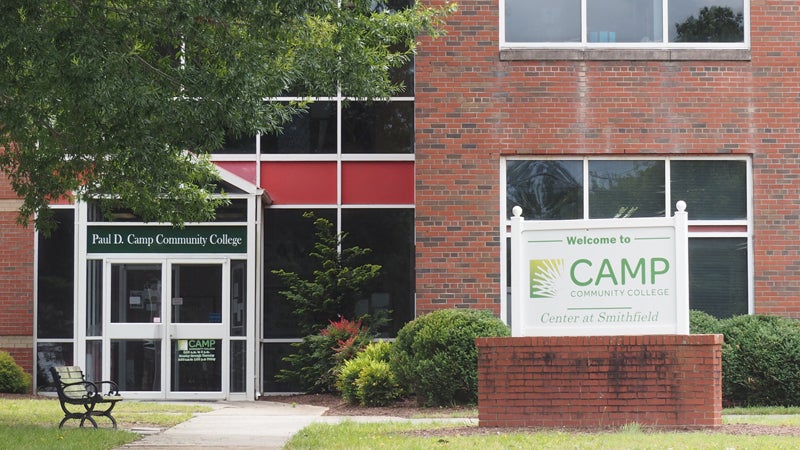IW schools weigh reopening options
Published 10:45 pm Monday, July 27, 2020
Parents will need to opt in for student transportation this fall, according to Isle of Wight County Schools.
COVID-19 will make providing safe, efficient transportation challenging. The division’s largest buses, which normally have a capacity of 77, will be limited to carrying 26 students when social distancing measures to limit the spread of COVID-19 are implemented.
In addition, students and drivers will be required to wear masks while on board and the seats closest to the driver will be left empty in order to give them an extra measure of space. “We need to keep our drivers healthy,” said Superintendent Dr. Jim Thornton, who added that the division was already short on drivers before the coronavirus pandemic.
But even with those steps, riding the bus poses an enhanced risk of exposure to the coronavirus. If anyone on the bus develops symptoms or tests positive, up to nine people could have been within a 6 foot radius, and therefore would need to be isolated. The buses would also be cleaned after every run and a sanitizing fogger would be used, if necessary, should anyone aboard test positive.
Thornton, the school board, administrative officials and the local health district director were among those who met for two and a half hours on July 23 to publicly discuss plans, details and concerns that will affect how students resume school this fall.
“If you haven’t been on a school bus lately, the seats are pretty tight,” said Thornton, who noted that drivers were already doing double runs under the pre-COVID transportation plan.
Board Chairwoman Jackie Carr asked if the division is obligated to provide transportation for all students. Thornton confirmed that it is not. Under state law, he said, the school system is only required to transport special education students.
“It’s always been what we do in public education but it is not a requirement,” said Thornton, who urged parents who have the option to drive their kids to school to do so in order to accommodate families who have no other choice besides the school bus.
The bigger question, however, is whether students will be able to receive in-person instruction at all come fall.
Over the last 10 days, “we’ve seen a very appreciable rise, a very significant rise in Western Tidewater in the number of cases, number of hospitalizations and even a mild increase in the number of deaths in the district,” Western Tidewater Health District Director Dr. Todd Wagner said during the meeting.
But with the health situation and regulations changing almost daily, depending on the prevalence of COVID-19 and what phase of operation the state is in, in-person instruction could be five days a week, two days a week, or teaching might be 100% virtual for an undetermined time frame.
Nearly 90 Isle of Wight school system employees were involved in compiling data and creating plans and standards that will govern how schools operate in multiple scenarios. The division also conducted parent and staff surveys and consulted with other school systems, health officials and state education leaders. Part of the result of their work is a 54-page plan that was presented at the July 23 meeting. The plan is also posted on the division’s website.
Parents will be asked to make a decision on Aug. 5 if they’ll send their kids to school in person.
Thornton said the division is developing a daily at-home symptom checklist that parents will be asked to follow before sending students to school. Face coverings for staff and students will be required when social distancing isn’t possible, such as in common areas.
In the coronavirus era, Wagner confirmed that anyone who has a runny nose or mild cold or flu like symptoms would need to be out of school for everyone’s safety. In short, Wagner said, “we have to assume if they have those type symptoms, it’s likely a COVID patient.”
In classrooms, face masks will be required when social distancing is not possible, such as when a teacher approaches a student to provide one-on-one help.
If a student or staff member is suspected of having COVID-19, they will be isolated. If they are confirmed positive, contact tracing will be implemented for anyone who has been within 6 feet for at least 15 minutes.
Regardless if they attend in person or virtually, all students will receive take-home technology — an iPad, Chromebook or laptop, depending on their grade level, according to Michael Lombardo, the division’s assistant superintendent.
Students following the 100% virtual learning model will be expected to log in and participate in virtual video lessons with the cameras on their devices turned on. Attendance will be taken. “If you choose 100% virtual, you are heavily involved in your child’s education,” said Thornton, who added that the division plans to offer training for parents on how to navigate and use the various online learning platforms.
Lombardo also said the division has full access to Virtual Virginia coursework and curriculum, which will be “a tremendous time saver for our teachers and an excellent portal for our students to engage in blended and virtual (learning) models.”
Board members thanked everyone for their work in developing so many good options in uncertain times and said they feel a heavy sense of responsibility for whatever decision they make about reopening schools.
“I understand the struggle as a school board member trying to figure out what’s best for all, not just what’s best for me and my family,” said Vicki Hulick. “I have lost so much sleep over this,” she continued. “It turns my stomach every time I think about it because there’s no one right solution.”
Board member Alvin Wilson echoed that sentiment.
When making a decision, “there’s no such thing in my mind as one size fitting all,” Wilson said.





